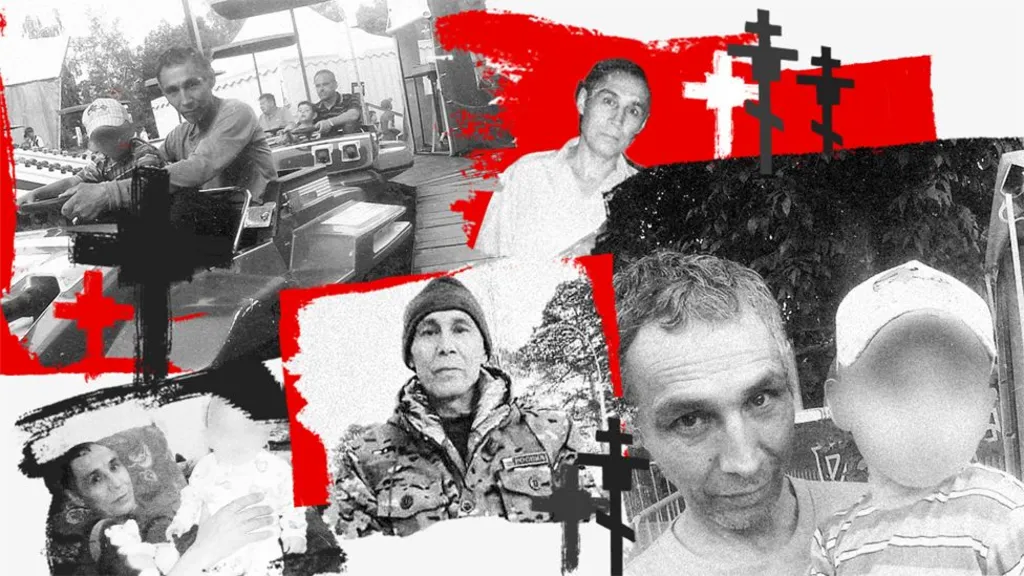Volunteer Deaths Surge as Russia’s Military Casualties Exceed 70,000
3 min read
Rinat Khusniyarov signed up to fight at the age of 62

Rinat Khusniyarov signed up to fight at the age of 62
Recent analyses indicate that over 70,000 Russian soldiers have lost their lives in the ongoing conflict in Ukraine. Notably, for the first time since the onset of Russia’s full-scale invasion in 2022, volunteers—civilians who joined the military—now represent the largest group of casualties on the battlefield.
Daily, Russian media and social networks publish the names, obituaries, and photographs of those killed, providing a somber reminder of the war’s toll. The BBC Russian service and the independent outlet Mediazona have compiled a list of 70,112 confirmed deaths, relying on official reports and data from families. However, the actual number of fatalities is likely much higher, as many families choose not to disclose details about their losses. The analysis does not include militia members in occupied territories like Donetsk and Luhansk.
Among the confirmed deaths, approximately 13,781 were volunteers, making up around 20% of the total. Previously, former prisoners seeking pardons accounted for the most deaths, now at 19%, while mobilized soldiers represent 13%. Since October of last year, fatalities among volunteers have consistently exceeded 100 per week, with peaks exceeding 310.
While Ukraine seldom comments on its own death toll, President Volodymyr Zelensky mentioned in February that around 31,000 Ukrainian soldiers had died, though U.S. intelligence estimates suggest the number may be higher.
The story of Rinat Khusniyarov, a 62-year-old man from Ufa, illustrates the plight of many volunteer soldiers. He had been juggling two jobs to support his family when he signed a contract with the Russian army in November, only to be killed less than three months later. His obituary characterized him as “a hardworking, decent man.” Many volunteers hail from small towns in Russia where decent-paying jobs are scarce.
While most volunteers appear to join willingly, there are reports from Chechnya of coercion and threats. Some recruits have expressed confusion over the open-ended contracts they signed, seeking help from journalists to terminate their service. The military offers salaries five to seven times higher than the average in less affluent areas, along with various social benefits, which incentivize enlistment.
The majority of volunteers who have died are between 42 and 50 years old, with 4,100 men in this age group recorded. Notably, 250 volunteers over the age of 60 have also perished in the conflict. Reports suggest that volunteers are often deployed to the most challenging frontline areas, particularly in the eastern Donetsk region, where they serve as reinforcements for depleted Russian units.
Russian soldiers have described a relentless “meat grinder” strategy, where waves of troops are sent into battle to exhaust Ukrainian forces. This tactic has resulted in significant daily casualties, with drone footage revealing assaults characterized by minimal equipment or artillery support.
A Russian defense ministry report indicates that 39% of soldier fatalities are due to limb injuries, underscoring the need for improved first aid and medical care.
To avoid a formal mobilization, the Russian government is increasingly encouraging volunteer enlistment through various incentives. Regional officials have been tasked with recruiting efforts, including outreach to men with debt issues and recruitment drives in schools and universities.
Since 2022, convicted prisoners have been incentivized to enlist in exchange for clemency, and a new policy allows individuals facing prosecution to volunteer for military service instead of going to trial. In return, their legal cases can be suspended or dropped.
Some volunteers have come from abroad, with 272 identified, primarily from Central Asia. Reports suggest that Russia has even recruited individuals from countries such as Cuba and Serbia, promising them immunity from deportation and a pathway to citizenship for surviving the conflict. However, many foreign recruits have faced similar challenges in understanding their contracts.
Governments in India and Nepal have urged Russia to cease recruiting their citizens and to repatriate the bodies of the deceased, but thus far, no actions have been taken.
Training for new recruits has drawn criticism. A soldier reported that promised training often fell short, with many being sent directly to the front lines after minimal preparation. Equipment shortages also plague soldiers, who frequently find themselves with inadequate gear.
Analysts emphasize the need for proper military training, highlighting that essential skills like camouflage and nighttime movement are often neglected. Many soldiers have also reported substandard equipment, leading some to purchase their own to improve their chances of survival.